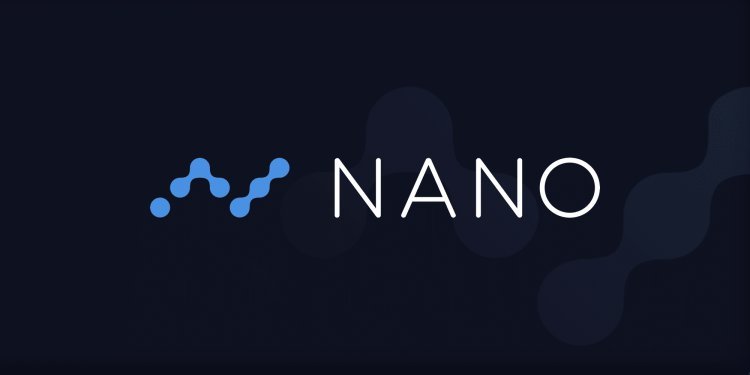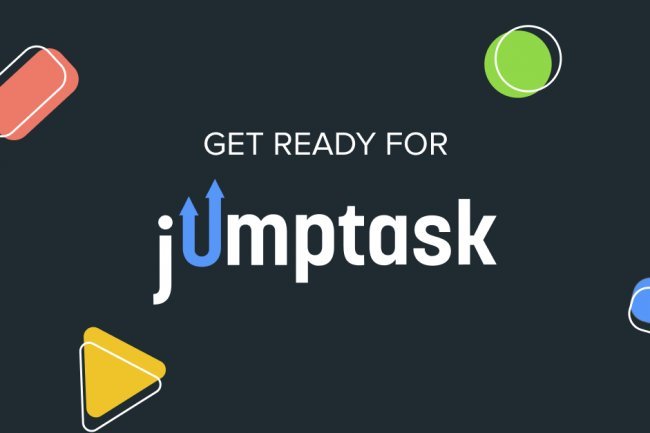What is Nano (XNO)? The Fee-Free Blockchain Explained
Nano is the only blockchain network that is completely free of transaction fees. What is Nano? Read more to take a closer look.

What is Nano?
Nano is a blockchain network that was designed to accommodate an instant peer-to-peer payment system that is also completely free of transaction fees.
It’s also capable of scaling to accommodate any number of users on the network because it does something that no other blockchain has done before. Each account (or wallet) is a blockchain, and each account-chain is tied together with Direct Acyclic Graph (DAG) technology – more on this down below.
The grand vision of this fee-free network was first published in 2014 by software developer Colin LeMahieu in a whitepaper. As such Nano has been under constant development alongside Ethereum, which was released in 2015.
What makes Nano a unique project?
The Nano network uses a unique combination of technologies that were novel at the time it was released. While Ethereum revolutionized the crypto space by introducing smart contracts, it was still running on a protocol that was modeled after Bitcoin.
Fast forward to the year 2021 and we see that both Bitcoin and Ethereum have been suffering scalability issues, but these are not present in Nano (formerly known as RaiBlocks). Operating as designed, Nano has never taken a single cent of fees in any of its running transactions since its release.
Does Nano have smart contracts?
The current major drawback of Nano is that decentralised applications (DApps) cannot be built on Nano, at least not yet.
Now, before you say “No smart contracts? Pass!” and leave this page, do consider that a few blockchains have been released without smart contract functionality at first, notably Digibyte (DGB), whose architecture is very similar to Bitcoin’s.
Even without smart contract functionality, Bitcoin is still the most popular digital currency. Of course, to the dismay of the environmentally conscious, Bitcoin requires a great deal of energy to confirm transactions. Not to mention, Bitcoin transactions take roughly 10 minutes to execute, and 60 minutes to confirm with absolute certainty.
By comparison, the energy requirement for a single Nano transaction is 6 million times lower than Bitcoin, and it takes around 0.14 seconds to confirm transactions with finality and costs nothing.
By design, Nano has always been a competitor of Bitcoin as a peer-to-peer decentralised payments network. There is a strong case for wider adoption of Nano as eco-friendly technologies become more relevant in the future.
The Nano coins, or XNO
Update: Formerly NANO, updated to XNO.
Nano’s native cryptocurrency is named XNO, whose ticker code is formerly NANO.
The Nano network has a maximum supply limit of 133,248,297.20 Nano coins, and it cannot be mined because all of it has been issued at the genesis (first) block.
The XNO coins were not distributed in an ICO but instead were airdropped through various online “faucets” or channels to any individual who completes a CAPTCHA puzzle.
As curious as the method of distribution may seem, this is one of the purest forms of distribution where the base value of XNO is not yet known until time goes by.
The zero cost of entry meant that the Nano coins can attract a greater number of people to make use of the asset, rather than to become wary of financial losses due to volatility risks.
Just like Bitcoin’s earlier days, early miners didn’t have to expend so much money on mining equipment. Bitcoin reached the masses smoothly as it wasn’t sold through an ICO like most of the proceeding cryptocurrencies.
In addition, the CAPTCHA-powered distribution ensured that only human beings, not bots run by a single entity, can receive Nano coins. The very decentralised distribution of XNO started in 2015, and all XNO was fully distributed by 2017.
How does the Nano network protocol work?
Blockchain technology is used to record account transactions on the Nano network. Each account or wallet has its own blockchain to create immutable proof of the balance of each account.
Blockchain is basically a data structure. Each transaction entry is recorded as an encryption of the transaction itself and the previous transaction. That way, no one can modify past data without wildly changing the present state of the chain.
Traditional networks like Bitcoin and Ethereum store the entire history of all transactions in one ledger, which is structured in one blockchain. Nano, on the other hand, does not do this. Instead, each account is responsible for updating its own ledger. There are as many blockchains in Nano as the number of accounts.
In the Nano network, the overarching global ledger is not structured in a blockchain, but rather in a block-lattice through Directed Acyclic Graph (DAG) technology. This block-lattice essentially maps out how account chains interact with one another.
In the case of block-lattice, the order of transactions doesn’t matter. What matters is how the accounts connect to each other — all the data of “who receives what from whom” gets recorded in the block-lattice.
So, while each account has the ability to create new blocks on their own personal blockchain, the validity of an account’s blockchain can be proven through the block-lattice. This ensures that no double spending is possible.
Another technology is needed to create consensus so that every node that holds the global ledger can agree on the same block-lattice state. This technology is called Proof of Stake, which was hardly implemented in decentralised networks at the time of Nano’s release.
Benefits of Nano’s technology
Nano might be ahead of its time. Although, Nano’s combination of account-model, blockchain, Proof of Stake, and DAG technology makes the network seem unnecessarily complex.
However, time has proven that this is by far a fast and secure way to transact in a trustless system without harming the environment.
Here are the benefits of Nano’s combination of technologies:
Space-saving
Decentralised networks rely on nodes, which keeps the network decentralised and working fully. Think of them like mini-servers. It’s not always easy to set up a node, which is why many networks come with their own incentive system.
One hurdle for people who’d like to set up a node is having to download the global ledger. Bitcoin’s full history of transaction amounts to 357 GB of data. However, DAG technology allows Nano to save space by pruning, downloading only the relevant data to get a node started.
The entire unpruned block-lattice data of Nano takes up only 63.46 GB of space, which is 20% of Bitcoin’s. While Bitcoin has been around twice as long as Nano, the number of transactions on Nano still exceeds Bitcoin by far — 124,808,987 blocks on Nano vs 694,309 blocks on Bitcoin (as of 5 August 2021).
Near-instant confirmation
As prefaced above, all transactions on Nano only need to be confirmed once as double spending is impossible through the ultra-fast Proof of Stake (PoS) consensus protocol.
Nodes are chosen at random to take the lead as the validator of incoming transaction requests. The amount of staked (deposited) XNO also increases the node’s chance to get picked. What is wildly different about Nano compared to other PoS networks is that there is no reward for having to validate transactions, at least not directly.
The reward is external, meaning that nodes that actively manage the network will be publicly listed on the curated representatives list, gaining “advertising exposure” as one example of the benefits.
Focus on user experience
The lack of transaction fee isn’t a gimmick. The network’s incredibly efficient use of energy allows it to run at a fraction of the cost to run nodes for other kinds of cryptocurrency. This offers quality user experience.
Businesses can save money on transaction fees, but more importantly foreign workers can remit their earnings without losing a single cent in the transaction. Exchanges can increase their profit margins when selling XNO through the native network.

What does Nano look like in the future?
Combining all the benefits of using XNO as means of payments, you have a cryptocurrency that is utilitarian and highly decentralised, and likely to have an increasing rate of adoption in the coming years.
XNO may be competing with Bitcoin (BTC) in some respect, but in reality, the two cryptocurrencies can coexist without any problems. Bitcoin is considered by many people to be the “digital gold”, while XNO can simply become a digital currency used for daily transactions.
You can notice that gold is not in direct competition with fiat cash, so why can’t we say the same for BTC and XNO?
How to buy Nano (XNO)
With that said, what are your thoughts on the Nano Protocol? Considering its utilitarian design and highly decentralised nature, XNO makes for an excellent altcoin for those looking to diversify their crypto portfolio.
Buying XNO is quick and easy through our platform at Easy Crypto. Additionally, when you sign-up with us, you’ll have access to our investment instruments such as Auto-buy templates, Portfolio tracking, and more.

Get started with XNO: Click here to invest in Nano (XNO) and add it to your portfolio.
Enjoy competitive rates for your XNO purchase with Easy Crypto, along with the investment tools to help you manage and maximise your crypto assets.
Check the latest rates: Use our crypto converter tool to check the latest rates for XNO.

Pro tip: you can preview the conversion rates for any crypto in our collection by going to our complete list of crypto assets.
We’ve got a handy YouTube guide for purchasing crypto on our platform. Check it out below!
Feel free to reach out to us with any inquiries and questions you may have! We are always ready to help.
For more topics on all things crypto explore the articles on our learning hub at Easy Crypto.















